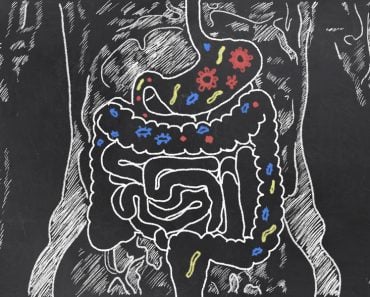Table of Contents (click to expand)
The digestive system does not digest food in the order in which you ate it. Rather, different parts of the digestive system digest food differently.
If you eat a donut and then eat a pizza, will your stomach digest the donut first and then move onto the pizza?
To answer the question, let’s look at the process of breaking down food into its smallest components and seeing how the digestive system actually works.

Recommended Video for you:
Digestion Begins With The Mouth
The process of digestion starts from the very first bite that a person takes. The teeth grind all the large good particles to smaller bits.
The saliva produced in the mouth, along with the mechanical act of chewing, begins the process of digestion. Saliva has enzymes that break down some of the larger sugars and fats. After chewing the food, this mass of incompletely broken-down food is called a bolus.
The bolus then moves into the stomach via the esophagus.
The Stomach Digests Anything That’s Inside It
A lot more digestion occurs in the stomach. Several enzymes are secreted in the stomach that further break down the constituents of food, such as pepsinogen, which when converted to pepsin, its active form, breaks down proteins into smaller peptides. The stomach also produces hormones like gastrin, which increases the mobility of the stomach.
Contrary to popular view, the hydrochloric acid secreted by parietal/oxyntic cells in the stomach does not have any significant digestive functions. The HCl serves two purposes. First, to kill any pathogens that might have entered along with the food. Second, to inactivate the salivary enzymes which denature in the low pH (about 2 pH units) conditions of the stomach.
The stomach’s main job is to mix everything up. If you had a donut immediately followed by a pizza, the stomach would mix everything up until the pizza was indistinguishable from the donut. The muscles of the stomach are strong and produce powerful contractions that churn the food into chyme.
But here, it is important to consider timing. If you ate a pizza mere moments after you ate the donut, then everything will get converted to chyme. But, you’ve eat the pizza, an hour or two after the donut, then the stomach has already started digesting the donut. The pizza would now be added to the stomachs digestion efforts.

The Small Intestine
The small intestine is where most nutrients are absorbed and just like the stomach, the small intestine doesn’t distinguish between when a food was eaten.
As the chyme enters the small intestine, several things happen.
Briefly, the liver secretes bile salts via the gallbladder, while the pancreas secretes bicarbonate and various digestive enzymes into the duodenum. The bicarbonate ions neutralize the acidic chyme and make it more basic. The bile salts serve to emulsify the fat so that lipases can effectively break down fat.
Most digestive enzymes are secreted by the pancreas, such as peptidases like trypsin, chymotrypsin and carboxypeptidases (which break down peptides into amino acids), lipases (which break down fat into individual triglyceride molecules), pancreatic amylases, and nucleases (which break down nucleic acids like DNA and RNA).
The small intestine also has its own digestive enzymes. These are called brush border enzymes, as they are present on the cells of the small intestine.

But the small intestine does prefer to absorb some nutrients first. The three parts of the small intestine—the duodenum, the jejunum and the ileum—absorb different nutrients and have different capacities. Most of the nutrient absorption occurs in the duodenum and jejunum of the small intestine, but the ileum is also important for the absorption of certain nutrients.
As the food enters the large intestine, most nutrients have already been absorbed. The large intestine now absorbs the water and some of the remaining minerals that are left. The large intestine converts the chyme into feces by secreting mucus and the gut microflora (the bacteria present in the gut) changes it chemically. After all this, the end product is our fecal matter (poop) that remains to be excreted.
Conclusion
To answer the primary question in the title of the article, yes and no. The digestive system does not work in the order of the food you have eaten. That being said, if you eat a burger and then scarf down a donut an hour later, the digestive system will digest the burger first.
The digestive system does begin the break down of some nutrients before others. As we saw above, carbohydrates begin digestion in the mouth (salivary amylases), but enzymatic protein breakdown begins in the stomach.
So, the next time you have both a burger and a donut, remember that they’ll eventually both become one large pulp of nutrients and exit the body as brown nutrient-barren blobs.













